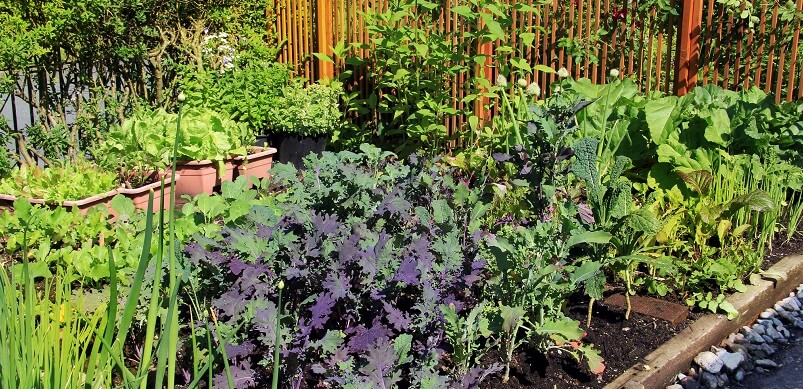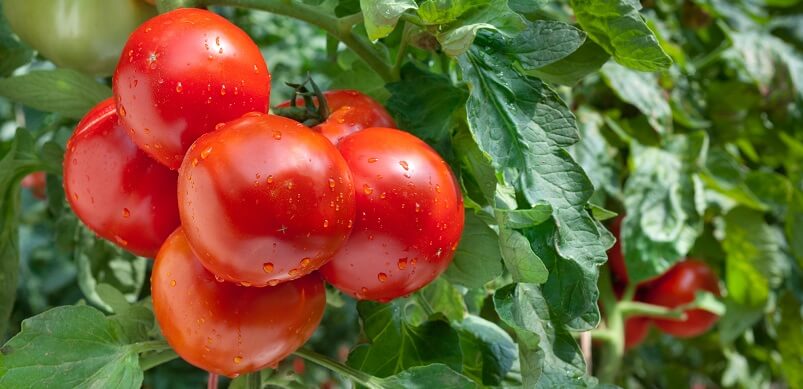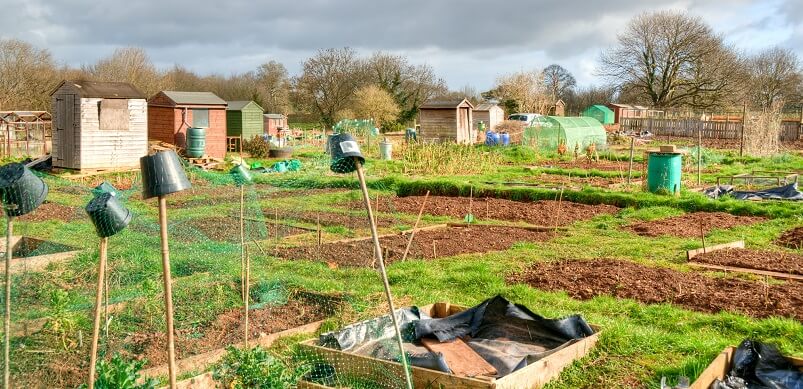
Team Tips: Starting your Allotment with Chris
August 12, 2021 | DIY & Home Improvement | Gardening Tips | Lifestyle | No comments
Allotments have long been a hobby and passion for gardeners and nature lovers across the country, but it can be tricky knowing where to start if you’ve never had one before. What to plant, what equipment to get hold of, how much time to dedicate to your new outdoor project… with these things to take into account, it’s a good idea to make sure you don’t go in blind.
Fortunately, our graphic designer Chris is no stranger to allotments, having cared for his own for the last four years. Read on for Chris’s advice on starting an allotment for beginners, and you’ll know everything you need to know to get green fingers and watch your project sprout in no time!

What encouraged you to start your own allotment to begin with?
I’ve always been into gardening from a young age, and I cut lawns as a teenager to get a bit of pocket money. My father in law used to grow tomatoes in his greenhouse and they always tasted better than the supermarket ones, but a few years ago he sadly passed away. A few weeks after, I was driving down the road and noticed a sign saying “Allotment Plots Available” and something made me pull over. I don’t know what it was, but it was just one of those things.
As I approached the gate, the chairman of the site was just leaving – coincidence or fate? I asked him about the plots, and he told me he had one left and was happy to show it to me. I asked how much and he said £40 a year, so I snapped his hand off and took the plot on the spot. I still don’t quite know why I stopped there that day – was my father in law looking down on me? – but the first thing I did was buy a greenhouse, and I’ve been growing tomatoes ever since!
Are there any early steps or preparations you would recommend beginners take before they start their own allotment?
Work out if you can fit an allotment into your life. It can be time-consuming and commitment is needed to keep on top of it. It can be hard to juggle family and work alongside an allotment, but if you break it up into small chunks, it can be done. But, of course, time may not be an issue if you’re retired.
Also, plan your area before planting, as crop rotation is essential and each year your plan will be different.

Is there any particular equipment that you would say is absolutely necessary for a beginner’s allotment? Any recommendations?
There are so many bits of kit you can buy, from soil testing kits to rotavators, to make your life easier. But, as a beginner, I recommend buying a good quality spade and fork for working the soil, a rake for getting a fine tilth for seed sowing, and a hand trowel and hoe for keeping the weeds at bay. Oh, and a tape measure for getting the spacing right, as well as some string to get the rows straight.
You also really need somewhere to start seedlings off so you can get ahead in the season – somewhere they will be protected that gives them a good head start before you put them out into their growing positions. You can do this in your house or conservatory, but I would recommend investing in a poly tunnel, greenhouse or potting shed at some point. This can be done on a budget. You just need somewhere with a higher temperature that lets sunlight in but is also sheltered from the elements.
Somewhere to store your tools is also a must, as you don’t want to keep bringing them on-site, so a shed is a good investment. Besides, a shed is also a great storage place for a few cans of beer and a couple of chairs for inviting fellow plot holders over for a chin wag!
Oh, and I would also invest in a good book for some extra help. My go-to book is The Vegetable Expert by Dr D. G. Hessayon.
Are there any particular plants or vegetables you would recommend beginning with for a starter?
Beetroots are easy to grow (I have never failed with them yet) as are courgettes and squashes. The latter take up a large amount of space and, when established, cover the ground and stop the weeds from coming through. They are also less maintenance, as you simply need to plant, water and leave them.
I would also recommend thinking about planting your perennials (stuff that crops every year) such as grapevines and fruit trees for apples and pears. Asparagus and a crown of rhubarb are also both an allotment must. Finally, I would also recommend planting comfrey, which can be used to create a liquid fertiliser that is much better for the environment and is totally organic.

What are your own favourites to grow?
My own favourite vegetables to grow are tomatoes, but asparagus is definitely a close second!
How much time should beginners prepare to dedicate to keep their allotment thriving?
This is a difficult one as each season is different. It really depends on your plot size, the season and the weather. If it’s hot, tomatoes may need watering every day, for example. In the spring, you will be very busy digging the land and getting ready for planting seedlings. Summer is for maintaining, and winter is for clearing and getting ready for the next year. The condition of your plot when you take it on is also relevant – if it’s overgrown, expect to put some hours and weekends in.
What have the personal benefits of owning an allotment been for you?
I’ve found that life is much less stressful when you have an allotment in your life. It gives you somewhere you can get away and forget the hustle and bustle of modern life. Going back to basics by growing and eating your own produce is what we are supposed to do, and it’s refreshing stripping back like this. The knowledge and new skills I’m gaining are topped off with the satisfaction of eating and sharing my produce. The social side is also great – there’s nothing better than lighting a BBQ on the plot and sharing a few cold beers and a good chat!

Now that you’ve taken the time to read up on Chris’s allotment advice, you’re probably in the mood to get outside and dirty more than ever! And you’re in luck – just because summer is coming to an end, that doesn’t mean that planting and gardening need to stop, as we discuss in our blog post on essential gardening tips for September and October.
While you’re here, don’t forget to check out our garden accessories to get your hands on what you need to get stuck in.
Tags: Allotment, Gardening, Gardening Advice, Gardening Tips

